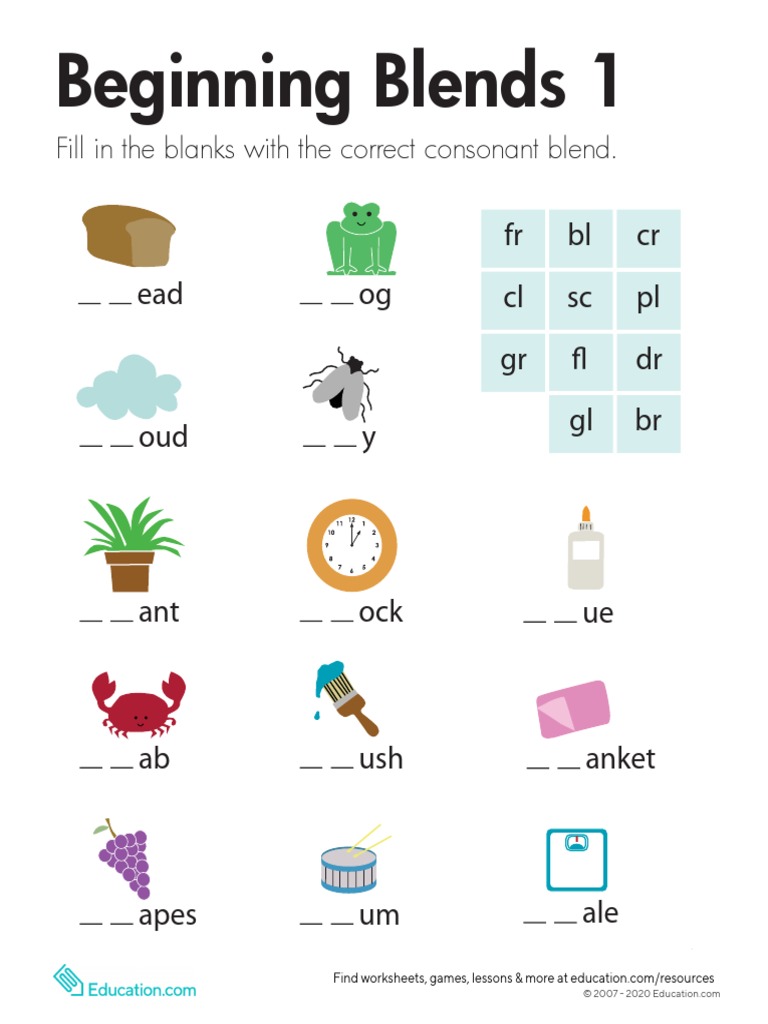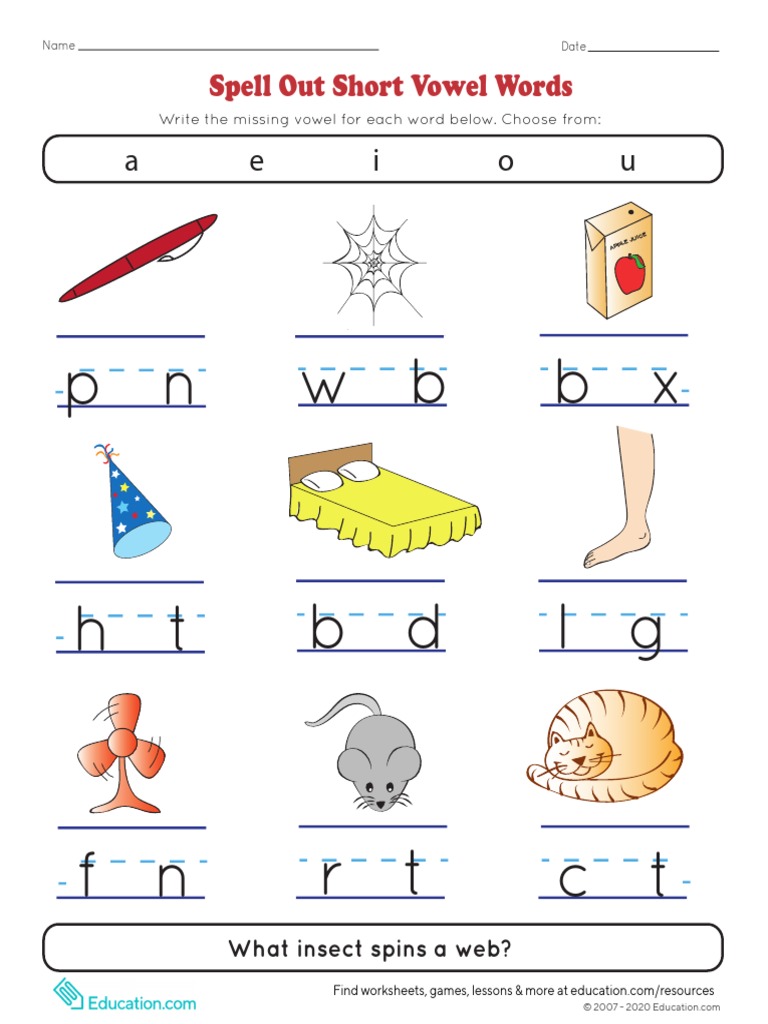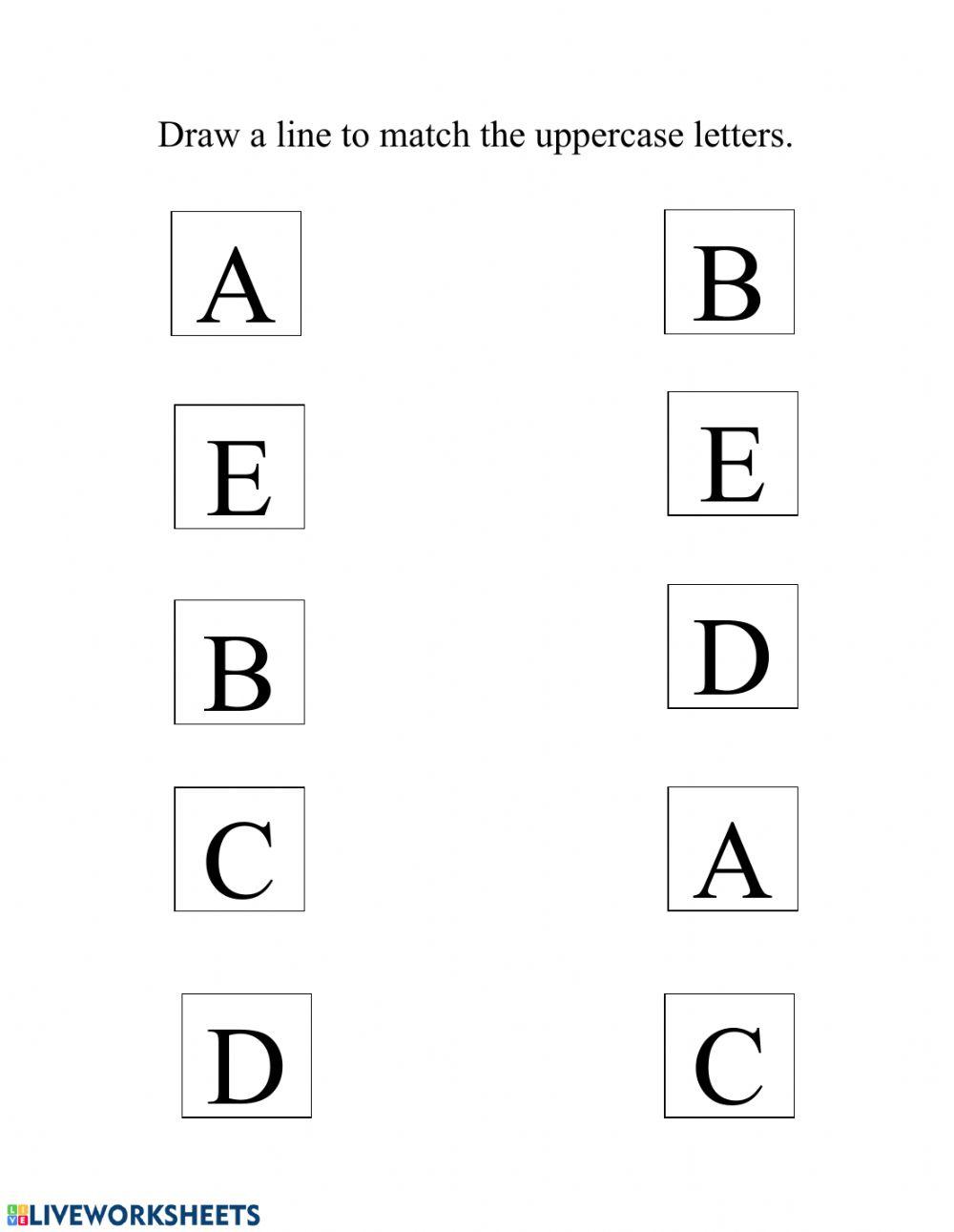Language is a fascinating puzzle, and understanding its pieces is essential for reading and writing. One of these critical pieces is beginning blends. These combinations of consonants at the start of words are foundational for young learners, helping them decode and pronounce words more effectively. In this article, we will explore what beginning blends are, provide a list of common blends, and offer fun activities to help children master them.
What Are Beginning Blends?
Beginning blends are two or three consonants that appear together at the beginning of a word. Unlike digraphs, where two letters combine to make a single sound (like "ch" in "chat"), blends maintain the individual sounds of each letter. For example, in the word "blow," the "b" and "l" sounds are both heard. This distinction is crucial for teaching phonics and developing reading skills.

Common Beginning Blends
Here’s a list of some common beginning blends, along with example words for each:
1. bl
- Black
- Blue
- Blanket
- Blame
2. cl
- Clown
- Cloud
- Clip
- Clean
3. fl
- Flag
- Flower
- Flip
- Flash
4. gl
- Glass
- Glue
- Glow
- Glide
5. pl
- Play
- Plant
- Plane
- Please
6. sl
- Slide
- Slime
- Slow
- Sleep
7. br
- Brown
- Brush
- Bread
- Bright
8. cr
- Crab
- Cry
- Cream
- Cross
9. dr
- Drum
- Drop
- Dream
- Drive
10. tr
- Tree
- Train
- Trip
- Track
The Importance of Learning Beginning Blends
Mastering beginning blends is essential for several reasons:
-
Phonemic Awareness: Learning blends helps children recognize and manipulate sounds, a critical skill in developing reading proficiency.
-
Reading Fluency: Familiarity with blends allows for smoother reading, as children can quickly identify and pronounce words.
-
Spelling Skills: Understanding how blends work can improve spelling abilities. Children will be better equipped to spell words with these consonant combinations.
-
Vocabulary Development: As children learn blends, they expand their vocabulary, encountering new words that incorporate these sounds.
Fun Activities to Practice Beginning Blends
Here are some engaging activities to help children practice and master beginning blends:
1. Blend Bingo
Create a bingo game using words that contain different beginning blends. Write the words on cards and have the children mark them as you call them out. This activity reinforces word recognition and makes learning fun.
2. Blend Sorting
Prepare a set of flashcards with pictures and words that begin with different blends. Have children sort the cards into groups based on their starting blends. This activity enhances their ability to recognize and categorize words.
3. I Spy with Blends
Play a game of "I Spy" using blends. For example, you might say, "I spy with my little eye something that starts with 'br'." Children can take turns guessing words that begin with the specified blend.
4. Blend Matching
Create a matching game with two sets of cards: one set with pictures and the other with words. Children must match the word to the corresponding picture, reinforcing their understanding of blends in context.
5. Word Creation
Encourage children to create new words using beginning blends. Provide them with a list of blends and ask them to come up with their own words or even silly combinations. This sparks creativity and deepens their understanding of blends.
6. Storytime with Blends
Choose storybooks that feature words with beginning blends. As you read aloud, pause to emphasize the blended sounds. Encourage children to listen for blends and repeat words back to you. This reinforces their learning in a natural context.
Tips for Teaching Beginning Blends
To make the process of learning beginning blends effective, consider the following tips:
-
Use Visuals: Incorporate pictures alongside words when teaching blends. This helps children make connections between sounds and meanings.
-
Model Pronunciation: Clearly pronounce the blends when introducing them. Encourage children to mimic your pronunciation to reinforce their phonetic skills.
-
Provide Consistent Practice: Regular practice is crucial for mastery. Incorporate blends into daily activities, such as reading time, writing, and even conversations.
-
Make It Interactive: Engage children with hands-on activities that allow them to explore blends creatively. The more active their learning, the more likely they are to retain information.
-
Celebrate Progress: Celebrate your child’s achievements, no matter how small. Positive reinforcement boosts motivation and confidence.
The Journey Beyond Beginning Blends
Once children feel comfortable with beginning blends, you can gradually introduce more complex phonics concepts, such as:
-
Ending Blends: Explore blends that appear at the end of words, like “nd” in “sand” or “st” in “fast.”
-
Digraphs: Introduce digraphs, where two letters combine to make a single sound, such as “sh” in “ship” or “th” in “this.”
-
Multisyllabic Words: Help children break down longer words into manageable parts, enhancing their decoding skills.
Conclusion
Understanding and mastering beginning blends is a vital step in a child’s literacy journey. These consonant combinations not only enhance phonemic awareness but also contribute to reading fluency, spelling skills, and vocabulary development. By incorporating fun activities and consistent practice into their learning routine, children will gain confidence in their reading and writing abilities. So grab your flashcards, bingo cards, and creativity, and embark on this exciting adventure of learning beginning blends together!



